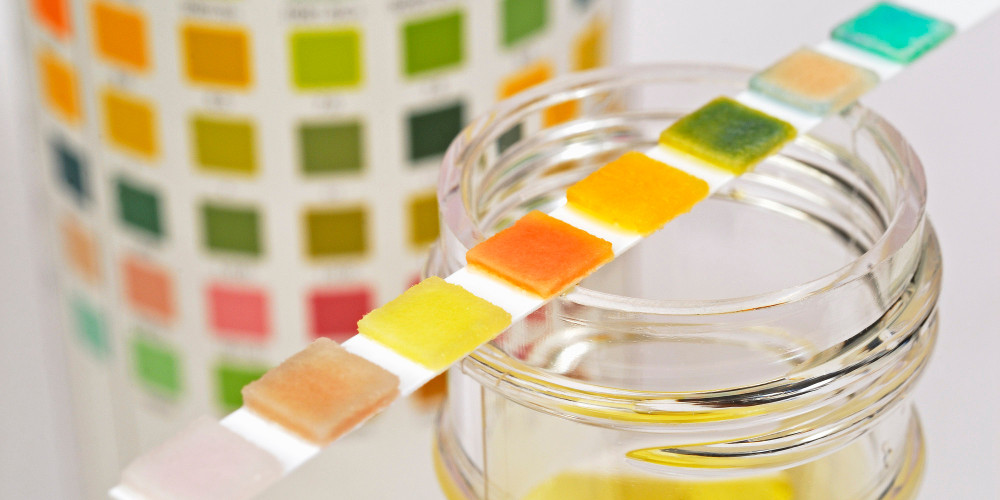Urine testing is an integral part of a routine health check. With every vaccination reminder that we send for dogs, we add the line:
“This vaccination… includes a free general health check and a urine test. Containers (and instructions on how to obtain a sample) are available free of charge on request.”
So why do we do this? We supply the containers for free, and we perform the test for free. Is it because we’re really nice people who like giving stuff away? Well, we are, but no, that’s not the reason.
The real reason is you can tell a lot about a dog’s general health, and kidney function in particular from a urine sample, so it really is an essential part of a dog’s general health check. It’s an inexpensive, non-invasive test, and all it requires is a little fore-thought to collect the sample.
So what are we looking for?
Firstly, we look to see how well concentrated the urine is. You can think of the kidney as millions of little filters all acting together to clean the blood. When the blood has passed through these filters, the liquid that’s produced is extremely dilute. Much of the water in this liquid is re-absorbed by a different part of the kidney, under the influence of various hormones, to produce the concentrated urine which is ultimately passed by the animal. As dogs don’t generally drink for fun like people do, how concentrated the urine is gives a good indication of how well the kidney is performing.
Next we look for various chemicals, such as sugar or protein. Sugar will usually only appear in a diabetic dog’s urine, but we often find a little protein, and it’s presence is more difficult to interpret.
Finally we look for blood, which is always abnormal, but can come from anywhere in the urinary tract from the kidney at the top, to the urethra at the bottom.
Changes in the urine are rarely definitively diagnostic for any disease process, so when we do find problems, we may want to re-test a fresh sample after a week or so; or proceed to further testing to check out whichever organ we are worried about.
How to Collect a Urine Sample.
We have a full description of how to collect a urine sample from a dog here.
We don’t need much urine. A couple of teaspoons worth is plenty, which is about a half-full sample pot.
What about cats?
It’s more challenging to collect urine samples from cats. We do have a special kit that we also give out free of charge to help with the collection, but generally, we only do this where we have a suspicion of problems. This might be if the cat has a urinary problem, such as going in unusual places, or more frequently than normal; or it could be because the cat has lost a significant amount of weight, and we would like to start the process of checking the kidney function.

